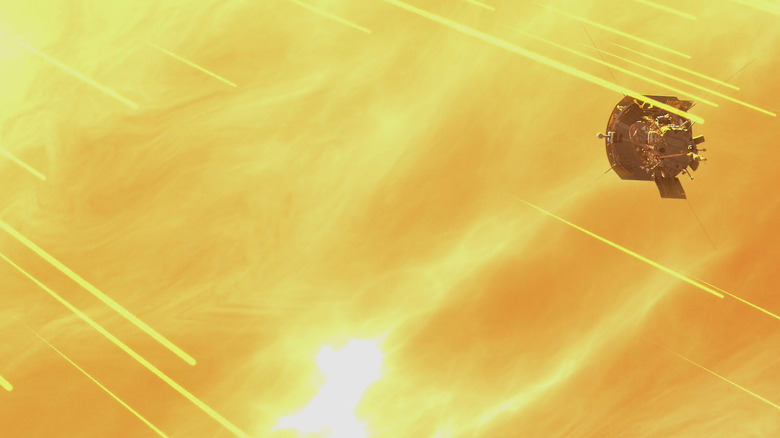NASA's Mission To 'Touch The Sun' Just Hit Another Major Milestone
In 2018, NASA launched a mission to do something that scientists have never done before. The Parker Solar Probe mission is truly the first of its kind, venturing closer to our star than any spacecraft has ever dared, and it's already broken a number of records.
Now, the spacecraft is continuing its incredible journey by completing its second close approach to the Sun, bringing it to the record-setting distance it achieved during its first pass. As NASA explains in a new blog post, scientists are eager to examine the scientific data the probe is gathering during time closest to the Sun, and thus far everything appears to be going as planned.
"The spacecraft is performing as designed, and it was great to be able to track it during this entire perihelion," Nickalaus Pinkine of the Johns Hopkins Applied Physics Laboratory explains. "We're looking forward to getting the science data down from this encounter in the coming weeks so the science teams can continue to explore the mysteries of the corona and the Sun."
Sending a spacecraft into orbit around an object as large as our Sun might seem trivial considering NASA and Japan's JAXA space agencies recently did the same with asteroids. Those small space rocks required pinpoint precision to reach and successfully orbit, but the Sun poses its own unique challenges.
Obviously, heat is the biggest issue for man-made spacecraft that approach a star. Even at the seemingly huge distance of over 14 million miles from the Sun, the Parker Solar Probe has to wrestle with intense temperatures. NASA's heat shield technology was a hot topic while the probe was being built, and thus far it has handled the stresses as expected.
But the biggest test of the probe has yet to come. As the spacecraft continues to make close passes of the Sun it will travel closer and closer to the star's surface, eventually coming within around four million miles. The probe will face temperatures of 2,500 degrees Fahrenheit, which is hot enough to melt steel. If it survives, it could teach scientists new things about how stars like our Sun work.
